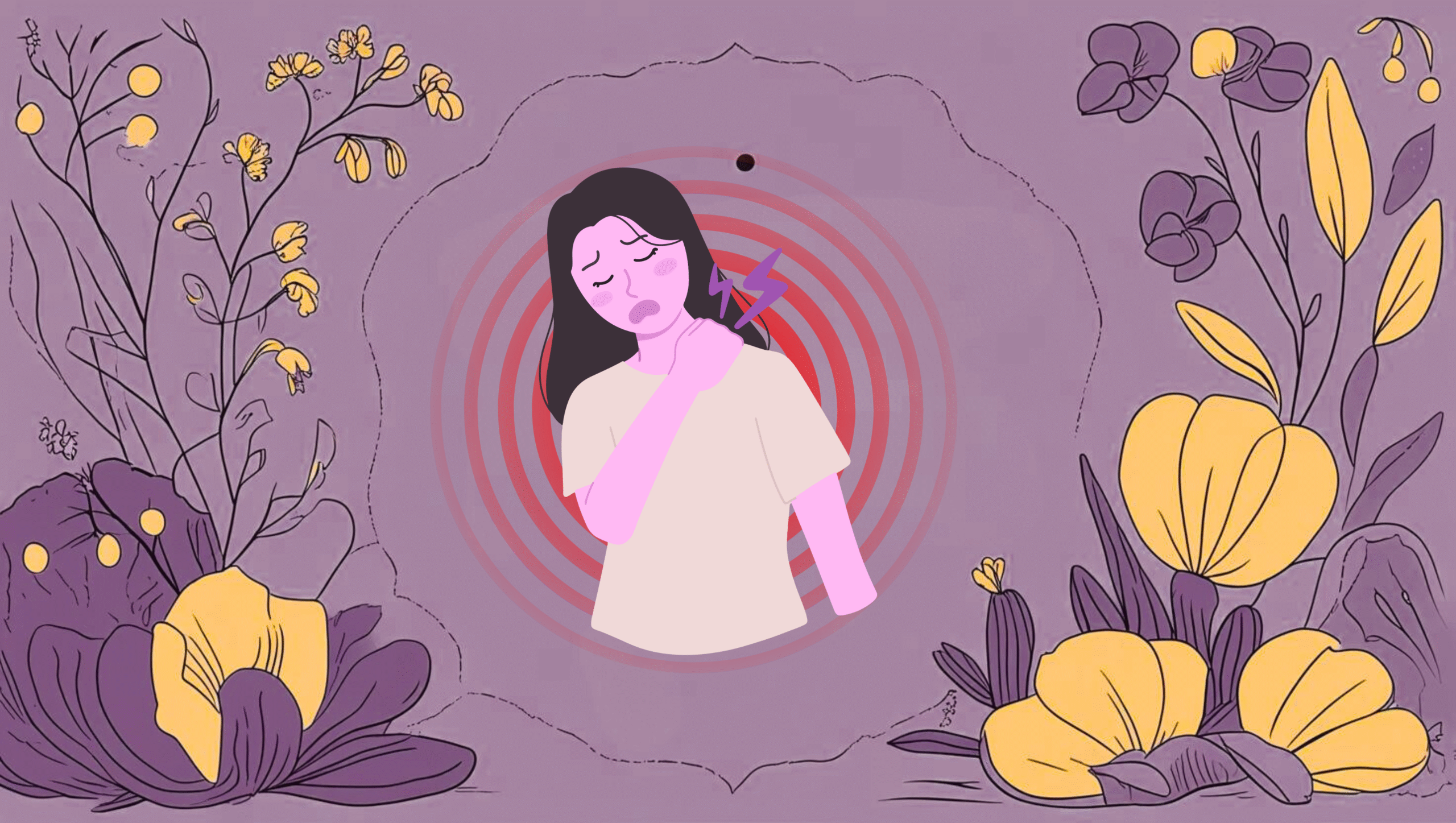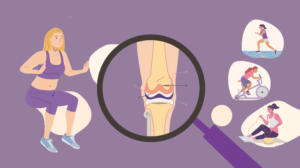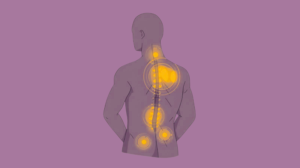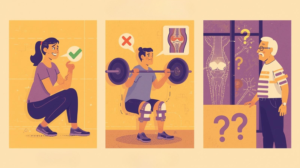Waking up sore after a long day of work, feeling stiff after a workout, or dealing with aching muscles during stressful weeks; these are all too familiar scenarios. Whether it’s the nagging back pain from sitting at your desk for hours or the soreness from overdoing it at the gym, muscle pain can seriously affect your day-to-day life. But here’s the good news: you’re not alone, and there are real, science-backed ways to find relief.
What Causes Muscle Pain in the First Place?
It’s Not Always About Exercise
While delayed onset muscle soreness (DOMS) after exercise is a common culprit, muscle pain isn’t only about workouts. It can be caused by various factors including:
- Poor posture: Sitting hunched over your desk can strain your neck, shoulders, and lower back.
- Stress: Psychological stress can manifest physically, leading to muscle tension and pain[1].
- Medical conditions: Conditions like fibromyalgia, myofascial pain syndrome, and infections can trigger chronic muscle pain[2].
- Medication side effects: Certain medications, like statins, have been known to cause muscle pain in some individuals[3].
- Nutrient deficiencies: Lack of vitamin D, magnesium, or potassium can affect muscle function and lead to pain or cramps[4].
How Can You Tell If Muscle Pain Is Serious?
Know When to See a Doctor
Most muscle pain is harmless and resolves on its own. But here are red flags to watch out for:
- Pain that lasts longer than a week
- Severe swelling or redness
- Pain accompanied by fever
- Sudden, sharp pain during activity
- Weakness or inability to move a limb
These symptoms could signal something more serious like a muscle tear, infection, or even a neurological issue, and should be evaluated by a healthcare professional.
What Are the Best Home Remedies for Muscle Pain Relief?
Simple Treatments That Actually Work
You don’t always need a doctor or prescription to start feeling better. Here are effective home remedies supported by research:
- Cold compresses: Reduce inflammation and swelling by applying ice packs during the first 24-72 hours after injury[5].
- Heat therapy: After the initial swelling goes down, warm compresses or baths can help increase blood flow and relax tense muscles[6].
- Gentle stretching: Regular stretching can help reduce muscle stiffness and improve range of motion[7].
- Hydration: Drinking enough water helps prevent muscle cramps and supports recovery[8].
Which Over-the-Counter Products Are Effective for Muscle Pain?
Backed by Clinical Studies
Not all products work equally, and some are more effective than others:
- Topical NSAIDs (e.g., diclofenac gel): Shown to reduce localized pain with fewer systemic side effects[9].
- Menthol-based creams: Products like Biofreeze work by stimulating cold receptors to dull pain temporarily[10].
- Magnesium oil: While not a cure-all, some studies suggest magnesium may help reduce muscle cramps when applied topically or taken as a supplement[11].
- Foam rollers and massage guns: Help improve circulation and reduce soreness post-workout[12].
Can Exercise Help Relieve Muscle Pain?
Move More, Hurt Less
While it may sound counterintuitive, staying active can reduce chronic muscle pain:
- Low-impact activities: Walking, swimming, and yoga help maintain flexibility and reduce stiffness[13].
- Strength training: Builds muscle endurance and resilience, helping prevent future soreness[14].
- Targeted physical therapy: Particularly useful for chronic or injury-related pain; often prescribed by physiotherapists.
Are There Dietary Changes That Support Muscle Recovery?
Fuel Your Body Right
Nutrition plays a vital role in muscle health. Consider the following dietary tips:
- Increase protein intake: Essential for muscle repair and recovery[15].
- Omega-3 fatty acids: Found in fish oil, they have anti-inflammatory properties[16].
- Antioxidants: Found in fruits like cherries and berries, they may reduce exercise-induced muscle damage[17].
- Stay hydrated: Muscle function relies on fluid balance, especially in hot or strenuous conditions[8].
How Do Stress and Sleep Impact Muscle Pain?
Your Brain and Body Are Connected
Chronic stress and poor sleep can directly worsen muscle pain:
- Cortisol release: Stress increases cortisol, which can enhance inflammation and muscle tension[18].
- Sleep deprivation: Reduces pain tolerance and slows down tissue repair[19].
- Relaxation techniques: Mindfulness, deep breathing, and progressive muscle relaxation have been proven to reduce tension[20].
What Preventive Strategies Help Avoid Muscle Pain?
Proactive Measures You Can Take Daily
Avoiding muscle pain starts with consistent self-care habits:
- Warm-up and cool-down: Always prep your muscles before and after exercise.
- Ergonomic workplace setup: Align screens, chairs, and desks to support good posture.
- Regular movement: Avoid sitting in one position for too long, take short walking breaks.
- Quality sleep: Aim for 7–9 hours per night to allow muscle repair and hormonal balance.
Are There Medical Treatments for Persistent Muscle Pain?
When Natural Remedies Aren’t Enough
For chronic or severe cases, medical intervention may be necessary:
- Prescription NSAIDs or muscle relaxants: Can help in acute injury or flare-ups.
- Trigger point injections: Used in cases like myofascial pain syndrome.
- Physical therapy: Tailored plans to address muscular imbalances and long-term relief.
- Cognitive Behavioral Therapy (CBT): Shown to help manage chronic pain by changing pain-related thought patterns[21].
Final Thoughts: What’s the Smartest Way to Manage Muscle Pain?
A Balanced, Evidence-Backed Approach
Muscle pain doesn’t have to rule your life. With the right combination of rest, movement, evidence-based products, and preventive care, you can take back control. And remember, if the pain doesn’t go away or gets worse, it’s worth talking to a medical professional to explore underlying causes.
FAQs About Muscle Pain Relief
1. What is the fastest way to relieve muscle pain?
The quickest method is often cold therapy within the first 24–72 hours, followed by heat therapy to relax tight muscles. Over-the-counter NSAID gels and gentle stretching can also help.
2. Is it okay to exercise with sore muscles?
Yes, as long as the soreness is mild and not due to an injury. Low-impact activities like walking or yoga can improve circulation and reduce stiffness. Avoid intense workouts targeting the same sore muscle group.
3. Which supplements help relieve muscle pain?
Magnesium, vitamin D, and omega-3 fatty acids are known to support muscle health and reduce inflammation, but always consult a healthcare provider before starting any supplements.
4. When should I worry about muscle pain?
Seek medical attention if muscle pain is accompanied by fever, swelling, redness, extreme weakness, or if it persists for more than a week. These may indicate a more serious condition.
5. Can stress really cause muscle pain?
Yes. Chronic stress leads to increased cortisol production, which raises muscle tension and inflammation. Stress-relief techniques like meditation, deep breathing, or progressive muscle relaxation can be helpful.
6. Do muscle relaxants work for all types of muscle pain?
Muscle relaxants can relieve acute muscle spasms or injury-related pain, but they are not suitable for chronic or systemic pain conditions without proper diagnosis and supervision.
7. How much water should I drink to avoid cramps?
Aim for about 2.7–3.7 liters per day (from all fluids and food), depending on your activity level, age, and climate. Dehydration is a common cause of muscle cramps and soreness.
8. Does massage actually help sore muscles?
Yes. According to research, massage increases blood flow, reduces inflammation markers, and improves muscle recovery time
References
- Roberts, B. M., Sczuroski, C. E., Caldwell, A. R., Zeppetelli, D. J., Smith, N. I., Pecorelli, V. P., Gwin, J. A., Hughes, J. M., & Staab, J. S. (2024). NSAIDs do not prevent exercise‑induced performance deficits or alleviate muscle soreness: A placebo‑controlled randomized, double‑blinded, cross‑over study. Journal of Science and Medicine in Sport, 27(5), 287–292. https://doi.org/10.1016/j.jsams.2024.02.002 The Washington Post+4PubMed+4PMC+4
- Wang, Y., Li, S., Zhang, Y., Chen, Y., & Yan, F. (2021). Heat and cold therapy reduce pain in patients with delayed onset muscle soreness: A systematic review and meta‑analysis of 32 randomized controlled trials. Physical Therapy in Sport. https://doi.org/10.1016/j.ptsp.2021.03.001 Wikipedia
- Anderson, R. D., de Noronha, M., & Kamper, S. J. (2011). Stretching to prevent or reduce muscle soreness after exercise. Cochrane Database of Systematic Reviews. https://doi.org/10.1002/14651858.CD004577.pub3 Wikipedia+1Wikipedia+1
- Field, T., Diego, M., & Hernandez‑Reif, M. (2007). Massage therapy research: Mechanisms and effects on performance, muscle recovery and mental state. Developmental Review. https://doi.org/10.1016/j.dr.2007.01.001 Wikipedia
- MDPI. (2024). Current indications and future direction in heat therapy for musculoskeletal pain. Journal of Clinical & Translational Research, 3(3), Article 19. https://doi.org/10.3390/jctr3-0413-019 mdpi.com
- Neurology Editorial Board. (2013). Symptomatic treatment for muscle cramps (an evidence‑based review). Neurology, XX(X), XXX–XXX. https://doi.org/10.1212/WNL.0b013e3181d0ccca neurology.org
- National Center for Complementary and Integrative Health. (2020). How integrative health research tackles the pain management crisis. MedlinePlus Magazine. https://magazine.medlineplus.gov/ magazine.medlineplus.gov
- ACP Journal Club. (2017). Noninvasive treatments for acute, subacute, and chronic low back pain: massage and exercise evidence. Annals of Internal Medicine. https://doi.org/10.7326/M16‑2367























